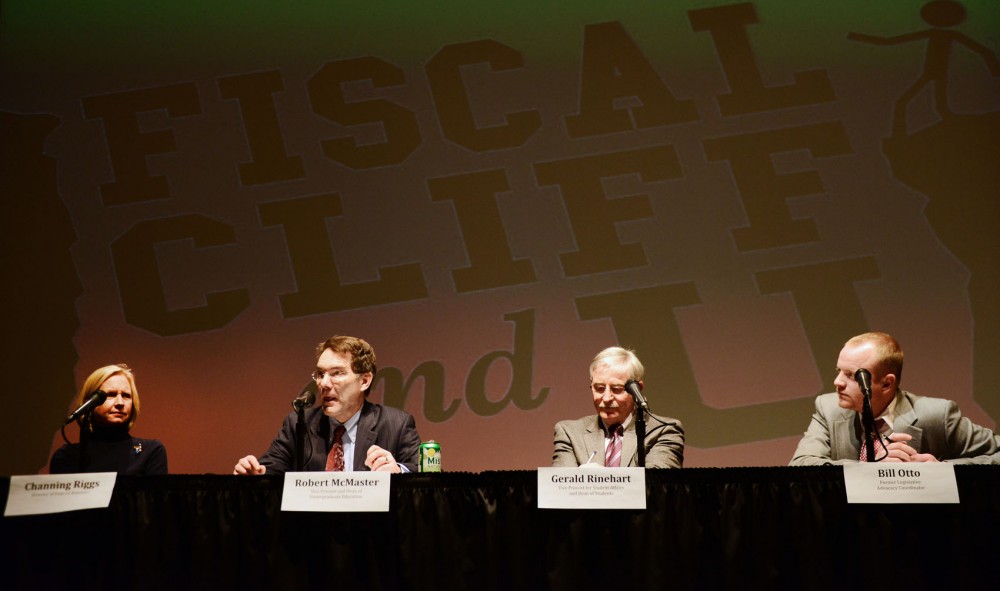Josh Nelson attends the University of Minnesota full time. He also works 50 to 60 hours each week, in hopes of graduating with less than $15,000 in debt.
But doing so could soon become harder.
In light of substantial federal debt, some University officials speculate higher education will undergo sizable cuts in areas like research and student aid. In response, students across the country are competing to raise awareness on the debt crisis.
The University’s immediate concern is the possible 5 percent cuts to many federal programs when the American Taxpayers Relief Act of 2012 expires in March, said Channing Riggs, director of University government relations.
Two common sources of federal student aid — Pell grants and Stafford loans — could be hit hard.
The Pell grant provides up to $5,550 in aid to students and doesn’t need to be paid back. Eligibility for the grant is based on financial need and academic status.
Funding for the Pell grant program is secured through 2013, but legislation to provide further funding hasn’t been passed.
Although Pell grants are exempt from possible sequestration cuts in March, Riggs said, state funding and other federal student aid programs like work study aren’t.
University of Minnesota students received more than $345 million in student aid in 2012, according to school data.
Cuts to need-based aid could have “catastrophic” effects on the University since there’s no recovery plan, Vice President and Dean of Undergraduate Education Bob McMaster said.
“It’s lost revenue,” he said. “[Pell grant cuts] would result in students having to borrow more.”
The Stafford loan could soon go through changes as well.
Qualified students can receive more than $50,000 in Stafford loans over four years but have to pay the money back with interest.
The interest rate on Stafford loans is 3.4 percent through June 30, but without congressional action, the rate will double beginning July 1.
Although it’s unclear where budget cuts will be made, Riggs said reduced federal funding to the state could also affect the University.
“One of the things we can’t anticipate is: If sequestration happens, how will we be affected by federal funding to the state?” she said. “[Cuts] will be hard not just for the University but for many Minnesotans.”
Twin Cities resident Peter Christodoulou, who’s taking a University class through a program for senior citizens, said he thinks government resources are mismanaged and that higher education should be more accessible.
“The way we treat our future leaders is disgusting,” he said.
‘Up to Us’
Students at 10 colleges and universities across the country are competing to raise student awareness on these issues through a six-week program called “Up to Us.”
But students aren’t advocating specific solutions to the debt, said Hamid Poorsafar, leader of the the University of Texas-Austin’s Up to Us team.
“We’re pushing working together,” he said. “You’re not going to get everything you want.”
The team at the University of Minnesota is planning three events examining the effect of the debt crisis on students, the state and the country, team leader Conrad Zbikowski said.
The winning team will receive $10,000 from Up to Us partners.
Research cuts
University officials are also concerned federal budget cuts related to the fiscal cliff will affect research funding — about $35 million is expected, Riggs said.
The National Institutes of Health, the top funder of University research, already had its budget slashed, along with many other research agencies like the National Science Foundation.
In an attempt to avoid further cuts to research, the University is trying to show its worth to Minnesota’s congressional delegates in Washington.
Riggs said she tries to show delegates that University employees and students are “good stewards” of federal funding.
“My goal is that all 10 members of the Minnesota delegation understand that [research funding and student aid] are really critical to our success,” she said.


